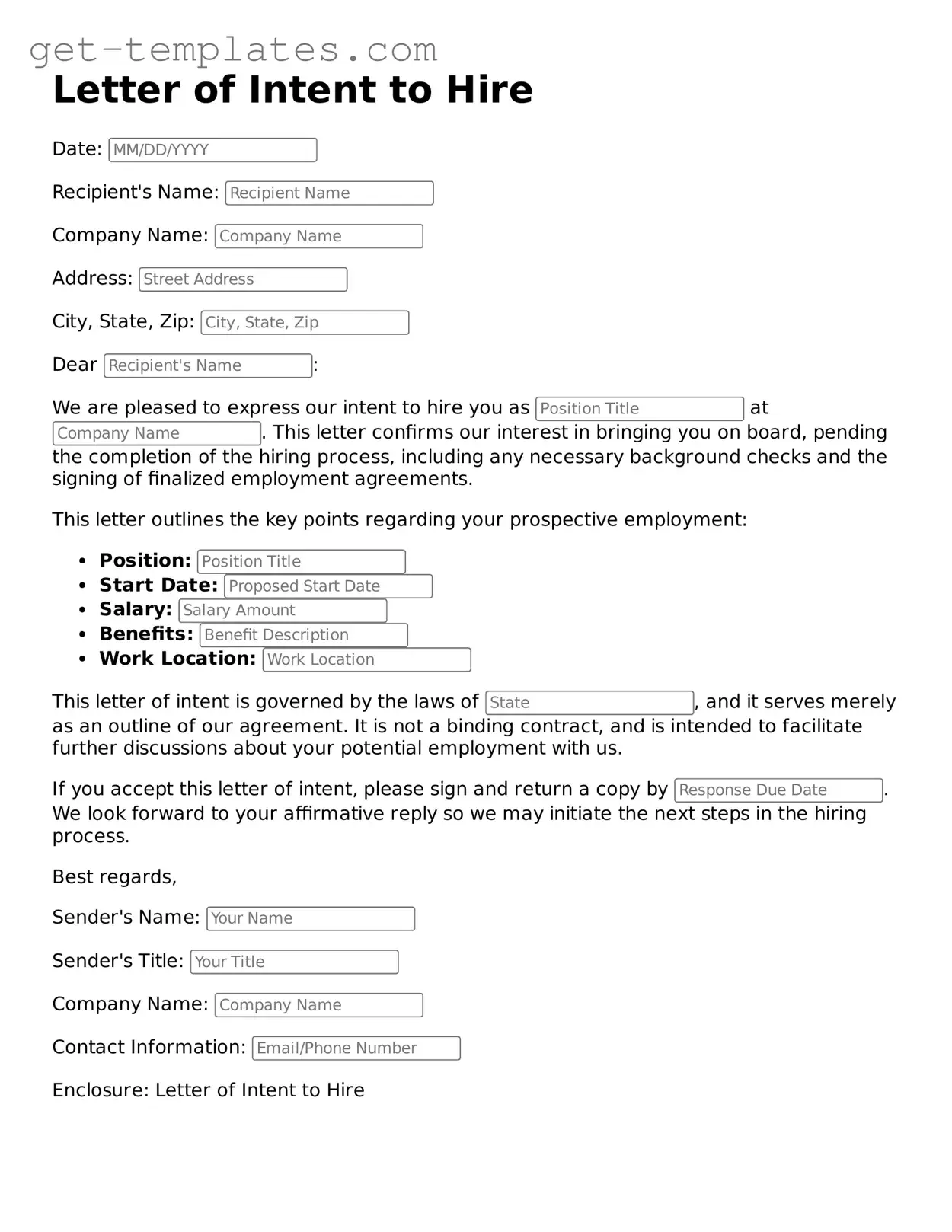What is a Letter of Intent to Hire?
A Letter of Intent to Hire is a document that expresses an employer's intention to offer a job to a candidate. It outlines the basic terms of employment and serves as a preliminary agreement before the final employment contract is drafted. This letter can help clarify expectations for both parties.
Why is a Letter of Intent to Hire important?
This letter is important because it establishes a mutual understanding between the employer and the candidate. It can help prevent misunderstandings regarding job responsibilities, salary, and other key details. Additionally, it can serve as a formal acknowledgment of the job offer, which can be beneficial for both parties.
A typical Letter of Intent to Hire includes:
-
The name of the candidate.
-
The position being offered.
-
The start date of employment.
-
The salary and any benefits.
-
Any conditions that must be met before employment begins.
Is a Letter of Intent to Hire legally binding?
Generally, a Letter of Intent to Hire is not legally binding. It is more of a formal expression of interest rather than a contract. However, specific terms outlined in the letter could be enforceable depending on the language used and the context of the agreement. Always consult with a legal professional for clarity.
How should a candidate respond to a Letter of Intent to Hire?
A candidate should review the letter carefully. If everything looks good, they should respond with a written acceptance. If there are any questions or concerns, it’s best to address those with the employer before accepting the offer. Clear communication is key.
Can a Letter of Intent to Hire be revoked?
Yes, a Letter of Intent to Hire can be revoked by either party before a formal employment contract is signed. It’s important to communicate any changes as soon as possible to avoid confusion or disappointment.
What should a candidate do if they receive multiple Letters of Intent to Hire?
If a candidate receives multiple letters, they should carefully evaluate each offer. Consider factors such as company culture, job responsibilities, salary, and benefits. It’s acceptable to ask for time to make a decision or to negotiate terms if needed.
How does a Letter of Intent to Hire differ from an employment contract?
A Letter of Intent to Hire is a preliminary document that outlines the intent to hire, while an employment contract is a formal agreement that includes detailed terms and conditions of employment. The contract is usually signed after the Letter of Intent is accepted.
Can a Letter of Intent to Hire include contingencies?
Yes, a Letter of Intent to Hire can include contingencies. For example, it might state that the offer is contingent upon passing a background check or drug screening. These conditions should be clearly outlined to avoid any misunderstandings.
What should employers keep in mind when drafting a Letter of Intent to Hire?
Employers should ensure that the letter is clear and concise. It should accurately reflect the terms of the offer and avoid any ambiguous language. Additionally, it’s important to keep the tone professional and welcoming, as this sets the stage for a positive working relationship.
